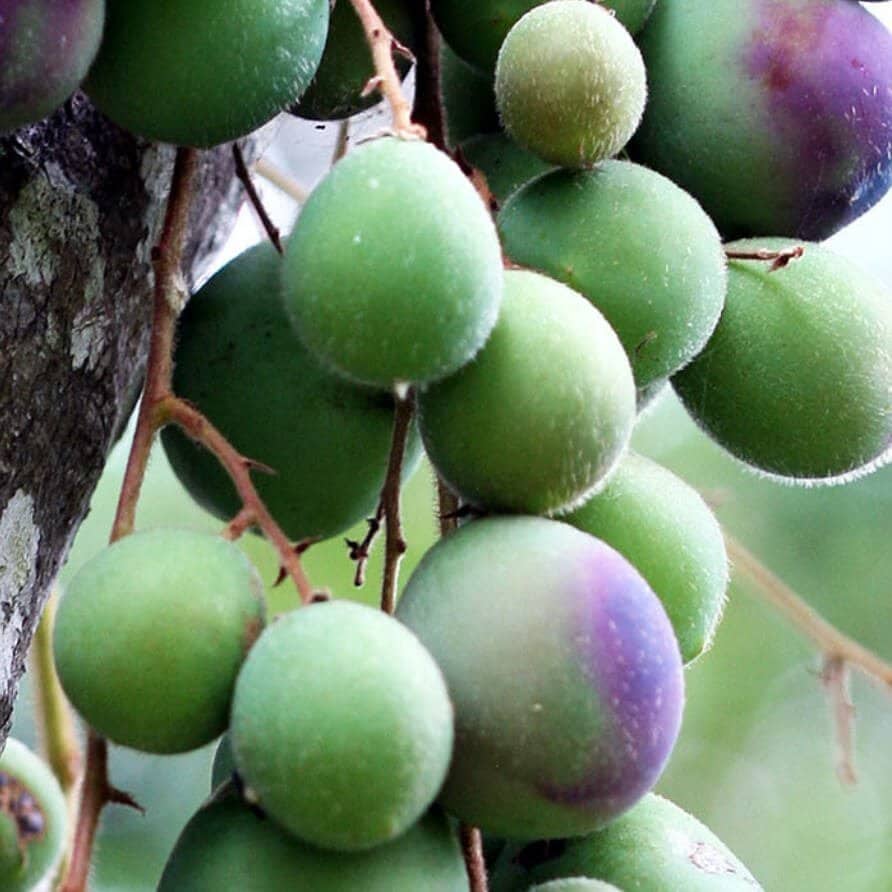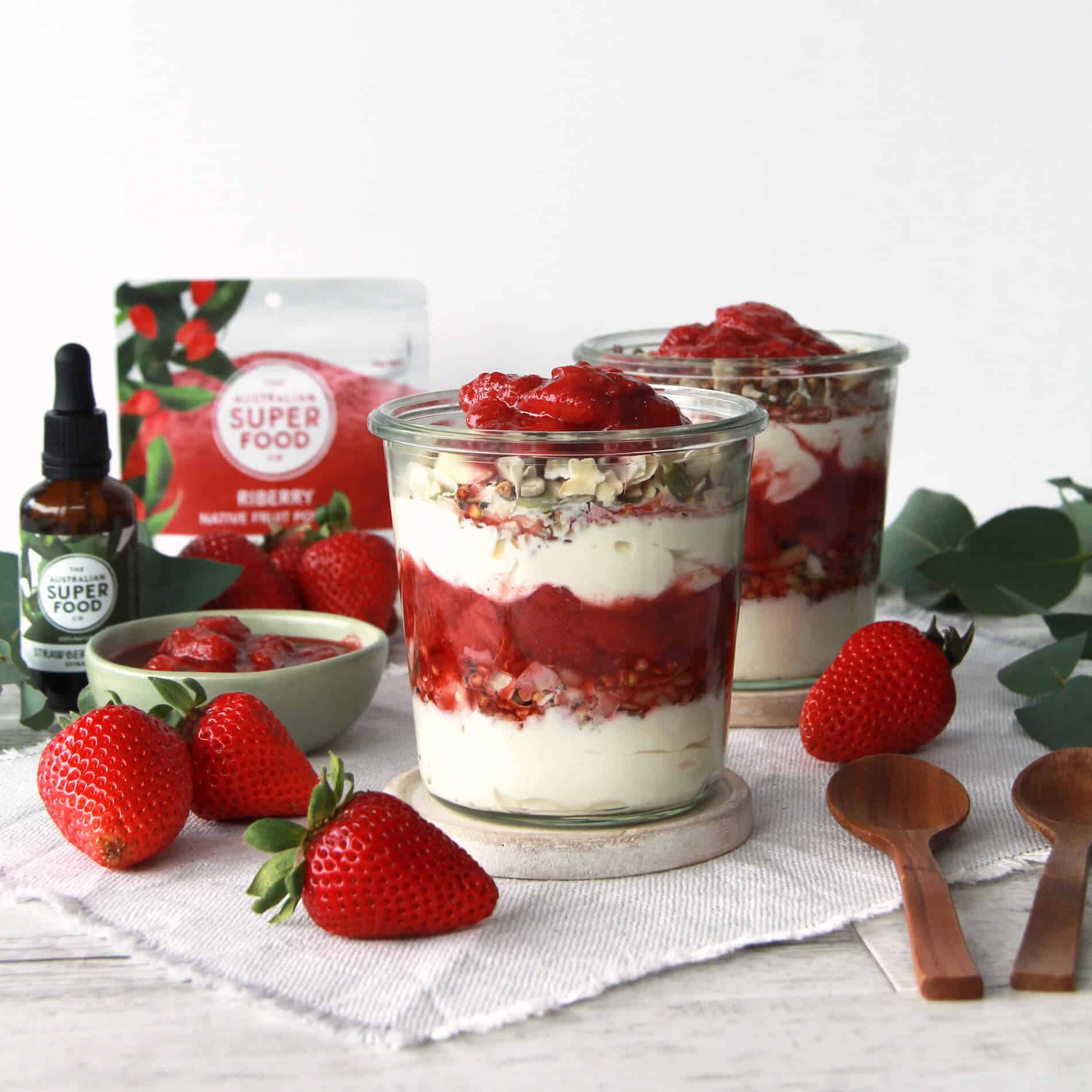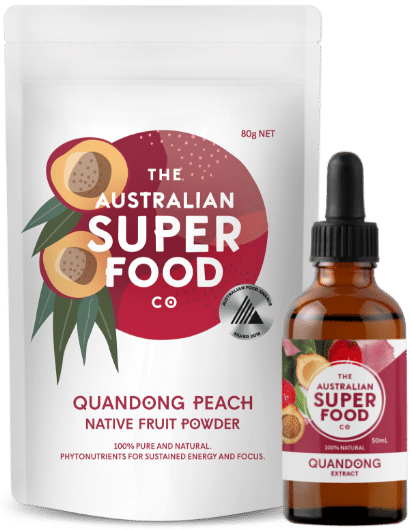Quandong (also known as Santalum Acuminatum) is mainly grown in South Australia in areas south of the Flinders Ranges, in the Riverland, and on the Eyre and Yorke peninsulas. It also grows in New South Wales and in the Wimmera and Sunraysia regions of Victoria.
Several small plantations have also been established in the Northern Territory, near Alice Springs.
Quandongs flower from later summer into early autumn. The fruit changes colour from green to red in late winter and harvest usually occurs during spring.
Traditionally a significant food source for Indigenous Australians, the Quandong or ‘Wild Peach’, features heavily in Aboriginal mythology across the desert regions of Australia.
These glossy, bright, crimson fruits have been a staple for the Pitjantjatjara people for over 50,000 years. While the Quandong was considered a wonderful substitute for meat, the leaves and bark of the tree were used for ceremonial and medicinal purposes. On hunting trips, Pitjabtjara men would seek out Quandong trees, consume the fresh fruits for energy and fill their coolamon wiris (dishes) with a supply of Quandong that they could dry and store for use when meat was in short supply. Made up of 25% protein and 70% complex oils, the Quandong kernels would also be used to create powerful antibacterial and anti-inflammatory pastes.
To this day, the Quandong is valued equally as a food, and as a medicine in treating skin conditions and rheumatism. This large fruit is so loved by desert tribes that whether in season or not, it is hard to find a Quandong tree that does not have a makeshift ladder propped up against make fruit collection by adoring fans a little easier!
Download The Australian Superfood Co provenance map here.
Flavour:
Initial taste is slightly sour and salty, developing into subtle, earthy, sweet peach and citrus notes.
Palate:
The flesh of a ripe Quandong has a dry texture and tart taste on the front palate, with subtle, earthy, sweet peach and citrus notes.
Aroma:
Aroma of dry lentils or beans with earthy, fermented peach and citrus notes.
The ripe, sweet, textured flesh of the Quandong can be eaten fresh, and is often dried and later reconstituted. It has twice the Vitamin C of an orange and the tart, salty taste lends itself to be used in a range of sweet and savoury dishes.
Try it in jams, preserves, sauces, chutneys and relish. It also complements sweet fruit pies, cakes, biscuits and other baked goods.
Use Quandong peach native fruit powder in cooking to impart a delicious tart flavour. It’s a perfect ingredient for cream and fruit-based desserts, and pairs well with white chocolate, cheese and cheesecake recipes, sponge cake, biscuits, creme brulee, ice cream and sorbet. Perfectly complements a variety of fruit, in particular apple, pear, citrus, tropical (banana, mango, papaya, pineapple), stone fruit and coconut.
Try adding a little to mild curries and slow-cooked tagine. Complements most root vegetables – sweet potato, pumpkin, beetroot, carrot, turnip, parsnip – combine with olive oil, garlic, fresh herbs (such as rosemary, oregano and thyme) and sea salt. This combination also makes the perfect baste for chicken and pork. Rub into fish before pan-frying and finish with a squeeze of fresh lemon juice, or mix a little Quandong peach native fruit powder with butter, garlic and sea salt, and smear over corn on the cob.
Quandong pairs well with dairy products, and oil and vinegar-based marinades, salad dressings, meat-based jus and egg-based condiments.
Complements white fish, chicken and pork and, used in a marinade, sauce or jus, works well with lamb and other red meat. Perfect combined with oil, dijon mustard, white wine vinegar and garlic for a simple salad dressing.
Quandong lifts the profile of alcoholic beverages such as gin, vodka, white rum, Cointreau and tequila, and adds a refreshing sour taste to soda, tonic, mineral waters and lemonade.
Click here for delicious Quandong recipes.










